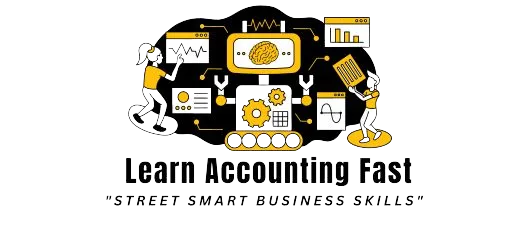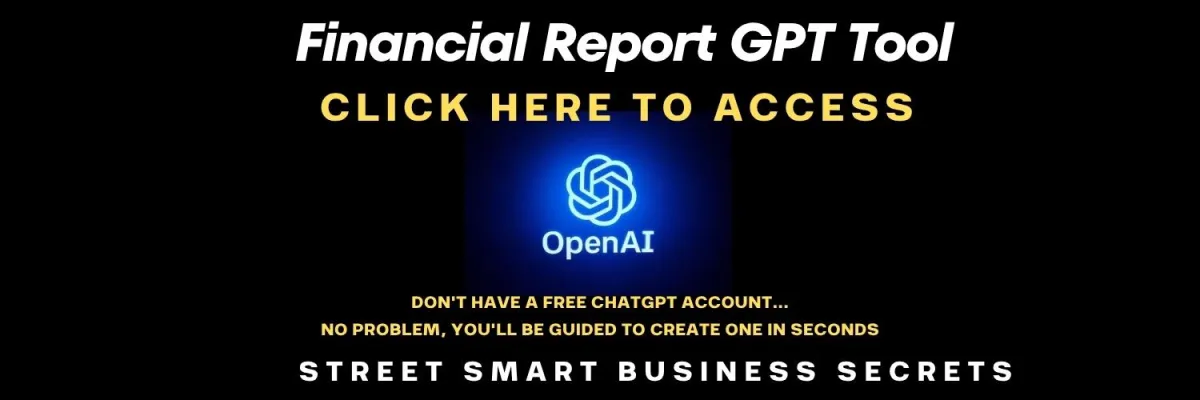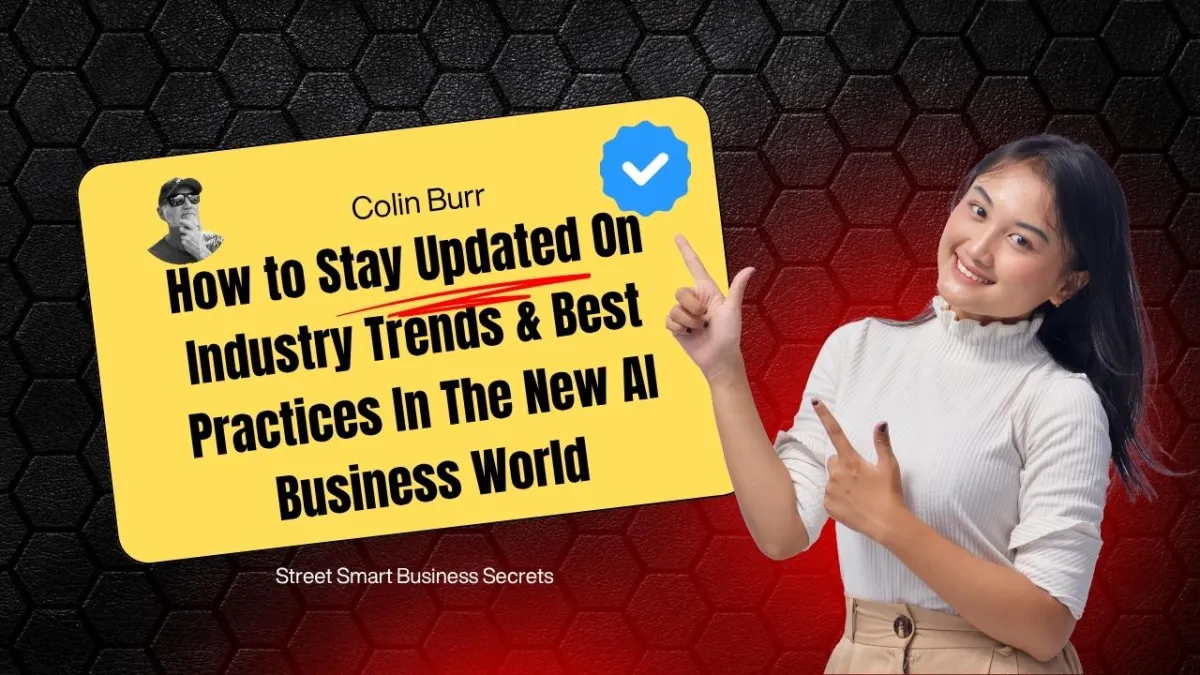How to Stay Updated on AI Business Trends and Best Practices (2025 Guide)
Find where you’re wasting money.
For example, a cafe owner uses the Lean Business Canvas to break down their expenses and customer value delivery.
They notice high costs in delivery commissions and low return customers.
Let’s get real—Google doesn’t cut it anymore when it comes to smart money decisions.
By using customer feedback and adjusting their model to focus on loyalty programs and direct delivery, they cut unnecessary fees and increased repeat sales by 18%.
Find where you’re wasting money. For example, a cafe owner uses the Lean Business Canvas to review their operations. They realize they’re spending too much on third-party delivery apps.
By switching to a direct ordering system promoted through email and social media, they cut commission fees and increase profits by 12%.
Why You Must Stay Updated in the New AI Business World
We live in a fast-changing world. AI (Artificial Intelligence) is now in nearly every part of business.
From marketing and sales to hiring and customer service, AI tools are changing how things work.
If you’re a business student, a team leader, or a business manager, staying up to date helps you:
Make better decisions
Spot new chances early
Stay ahead of your competitors
Use smart tools to save time and money
Missing out on these changes means missing out on success.
Top Smart Ways to Stay Ahead
Here are the best ways to stay updated on AI trends and business practices.
1. Follow Trusted AI Business News Sources
Some websites and newsletters provide clear and timely updates.
Morning Brew – Emerging Tech Edition
https://www.morningbrew.com/tech Easy to read, short news daily.Harvard Business Review – AI Section (https://hbr.org/topic/artificial-intelligence)
FutureTools.io (https://futuretools.io):
Shows trending AI tools and ideas each week, including new product demos, AI case studies, and weekly updates curated for business use
For Example: A manager at a small startup reads the Morning Brew tech email every day. He spots a new AI customer service tool and saves $10,000 per year by switching.
2. Use AI Tools to Track Trends
Feedly with AI Feeds – Let it watch keywords like "AI in finance" or "best marketing practices."
For Example: a business student sets Feedly to track "AI for startups." Each morning, they see articles, blog posts, and tool updates from sources like TechCrunch and Wired.
This helps them write better reports and keep up in class without spending hours searching.
Google Alerts – Sends you updates anytime news or blogs mention your topic.
For Example: a team leader sets up a Google Alert for "AI marketing automation." One morning, they receive an article about a new AI tool that writes ad copy. They test it, and it saves their team 10 hours per week.
Perplexity AI (https://labs.perplexity.ai) Ask it for trend summaries.
For Example: a business manager types in "latest AI trends for marketing" and gets a list of key insights from the last two weeks, including articles, data, and expert opinions. They use this to update their team meeting and plan next month’s strategy.
Tip: Set alerts with simple terms like “AI in small business” or “AI for managers.”
3. Join Online Business Communities
Smart people share new ideas in groups. You can join them too.
LinkedIn Groups – Search for “AI Business Trends” or “Digital Business Managers.”
For Example: a business student joins a LinkedIn Group focused on AI in business.
They see a post about a free webinar on using ChatGPT for customer service automation. After attending, they apply the idea in a class project and impress their professor.
Reddit – Subreddits like r/small-business and r/ArtificialIntelligence. For Example: a manager posts a question in r/small-business asking for the best AI invoicing tools. Within hours, they receive five recommendations, test two of them, and automate their entire billing system by the end of the week.
Facebook Groups –
For Example: "AI Tools for Business." A small business owner joins this group and sees a post about automating client follow-ups using AI chatbots.
They follow the steps shared in the post, implement an AI-powered chatbot like ManyChat integrated with Facebook Messenger, and reduce client response time from two days to just two hours.
Also tracking engagement rates and conversion responses improving customer satisfaction and saving hours of admin work.Example: A student learns about a new AI content writer from a Reddit post and uses it to build their class project. They test tools like Jasper and Writesonic to generate headlines and body text for a marketing assignment.
The final project earns top marks, and the student presents it at a local business meetup, gaining recognition and networking leads.
4. Take Short AI Courses & Webinars
LinkedIn Groups – Search for “AI Business Trends” or “Digital Business Managers.”
For Example: a business student joins a LinkedIn Group focused on AI in business.
They see a post about a free webinar on using ChatGPT for customer service automation. After attending, they apply the idea in a class project and impress their professor.
Reddit – Subreddits like r/small-business and r/ArtificialIntelligence. For Example: a manager posts a question in r/small-business asking for the best AI invoicing tools. Within hours, they receive five recommendations, test two of them, and automate their entire billing system by the end of the week.
Facebook Groups –
For Example: "AI Tools for Business." A small business owner joins this group and sees a post about automating client follow-ups using AI chatbots.
They follow the steps shared in the post, implement an AI-powered chatbot like ManyChat integrated with Facebook Messenger, and reduce client response time from two days to just two hours.
Also tracking engagement rates and conversion responses improving customer satisfaction and saving hours of admin work.Example: A student learns about a new AI content writer from a Reddit post and uses it to build their class project. They test tools like Jasper and Writesonic to generate headlines and body text for a marketing assignment.
The final project earns top marks, and the student presents it at a local business meetup, gaining recognition and networking leads.
5. Follow AI Leaders on Social Media
People like:
Sam Altman – OpenAI CEO who often shares the future of AI and business.
For Example: a business coach follows Sam Altman on X (Twitter) and sees a thread about how GPT agents will soon handle full sales processes. This sparks an idea to test AI in their CRM system and saves them 15 hours a week.
Andrew Ng – AI educator and co-founder of Coursera.
For Example: a mid-level manager watches Andrew Ng's course "AI For Everyone" and learns how to spot areas in their business where AI could save time.
After the course, they propose using AI to speed up customer service responses and their company saves 20% in support costs.
Elon Musk – Talks about AI and business often.
For Example: an entrepreneur follows Elon Musk’s discussions about xAI and the future of general AI. Inspired by Musk’s vision for AI agents that learn faster than humans, the entrepreneur begins testing autonomous AI bots in their logistics business, cutting delivery planning time by 60%.
Follow them on X (Twitter) or LinkedIn for news and bold ideas.
How to Tackle Business Challenges in an AI World
It’s not just about knowing trends. You need to act smart too. Here’s how.
Step 1: Spot the Problem
Ask questions like:
What’s not working in my business?
For Example: a store owner notices customers aren't returning after their first visit. They ask for feedback, check reviews, and realize long wait times are the issue.
They decide to explore AI tools that speed up order processing, improving customer satisfaction and retention.
What is taking too long or costing too much?
For Example: a marketing manager notices their team spends hours each week manually collecting customer feedback.
They explore AI tools like Typeform with GPT integration and automate survey analysis. This cuts their time in half and helps them react to customer needs faster.
Step 2: Ask the Right AI Questions
Use tools like ChatGPT to help:
"What’s the best way to lower ad costs using AI?"
For Example: a small e-commerce brand uses ChatGPT to write five different ad versions and A/B test them on Facebook.
They also use AdCreative.ai to generate high-converting images. After 7 days, they pause the lowest-performing ads and double down on the winners, cutting their ad spend by 40% while increasing sales.
"How can AI improve my inventory planning?
For Example: a retail manager uses an AI tool like Inventory Planner. It tracks past sales, predicts future demand, and suggests reorder times.This helps avoid stockouts or overstocking. After 3 months, the store sees 15% less waste and 10% higher profit due to smarter buying."
Step 3: Choose the Right Framework
Frameworks are like tools that help fix business problems. Just like using the right tool for a job, each framework works best for a certain kind of challenge. Here are four you can start with:
Problem: Costs are too high or profits too low
Framework: Lean Business Canvas.
What It Helps With: Breaks your business into parts so you can see where money or time is being wasted.
Example: A cafe owner reviews their expenses and sees delivery commissions are too high. They switch to direct orders, save money, and increase profit.
Problem: The same mistakes keep happening
Framework: 5 Whys
What It Helps With: Helps you get to the root cause of problems by asking "Why?" five times.
Example: A team misses project deadlines. They ask why each step went wrong and find unclear task roles caused confusion. They fix it by setting clearer responsibilities.Problem: The team isn’t sure who does what
Framework: RACI Model
What It Helps With: Makes it clear who is Responsible, Accountable, Consulted, and Informed for each task
Example: A small business launches a new product but has slow progress. Using RACI, they assign clear roles and speed up their work.
Problem: You want to try a new idea or tool fast
Framework: Design Thinking
What It Helps With: Lets you build and test ideas quickly with a focus on customer needs.
Example: A student wants to test an AI chatbot for customer support. Using Design Thinking, they map out customer pain points, brainstorm simple chatbot features, and quickly create a prototype using a no-code tool like Tidio.
After testing it with 10 classmates acting as users, they learn which messages confuse people. They adjust the design and end up with a polished version that could be used in a real business.
They present their idea at a pitch day and get interest from a local startup.
Build a simple version, test it with friends, get feedback, and improve it.
Practical Example: Using AI to Grow a Small Store
Problem: Sales are down in a small local store.
Solution:
Owner uses Google Alerts for “AI retail tips”
Finds a free AI tool for email marketing (e.g., Mailchimp with AI)
Joins a LinkedIn Group for AI in Retail
Learns how to offer special deals using AI predictions.
For Example: they use a tool like Dynamic Yield to analyze customer shopping patterns
The AI notices that most returning customers shop on Fridays and tend to buy cleaning products.
The owner then sets up a targeted Friday discount for those items, boosting weekend sales by 25%. Sales grow by 20% in 3 months
Best Tools and Resources
Summary: Stay Ahead or Fall Behind
To win in the new AI business world:
Stay sharp with daily news and alerts.
For Example: a business student sets their homepage to open FutureTools.io each morning, checks the top trending AI tools, and subscribes to the Morning Brew Tech newsletter. This routine helps them bring up-to-date insights to classroom discussions and build projects based on cutting-edge tools.
Use free tools like Feedly and Google Alerts.
For example, a business manager sets up Feedly to follow blogs on AI in finance and uses Google Alerts to monitor new mentions of "AI productivity tools." This way, they stay updated with fresh content each day and discover new solutions they can apply at work.
Join smart groups online.
For Example: a solo entrepreneur joins a Facebook group focused on AI for small business.
Each week, members share updates, tools, and strategies. One post introduces an AI tool that automates social media content. The entrepreneur uses it to schedule a month of posts in a day, saving hours and boosting engagement.Keep learning through short courses.
For Example: a corporate team leader signs up for Coursera’s “AI for Everyone” and completes it over lunch breaks. After finishing, they use what they learned to automate their team's monthly reporting using ChatGPT and Excel, saving 8 hours of work each month.
Solve problems using the right business framework.
For Example: a team leader notices repeated delays in launching projects. They apply the Responsible Accountable Consulted Informed Model to clearly define who is responsible and who must approve tasks.
This clears the confusion and improves project speed.
In another case, a small business owner tests a new idea for AI customer service using the Design Thinking method, building a prototype in a week, gathering feedback, and adjusting the tool before investing in full development.
Your Next Step: Set a reminder today.
Choose just one of these tips and use it this week.
For Example: if you start with Feedly, set up your first AI-related feed today and check it every morning for the next five days.
Or, if you're choosing a short course, enroll tonight and block 20 minutes a day to finish it within the week.
The AI world moves fast. But now, so can you, with clarity, tools, and a head start.
Related Reads:
Beginner's Guide to AI and Business Systems
For Example:, a business student reads this guide and learns how to automate cash flow tracking using a simple spreadsheet connected to an AI assistant.
They apply it in their school project and show how small businesses can predict expenses more easily.
Their professor praises it as one of the most practical uses of AI in the class.
Be the greatest you can be…
Join us, click the link below for short, sharp, simple video courses that give you confidence and street-smart business skills to simplify accounting and focus on growing your business to succeed.
Latest Posts
Master Prompts For
Financial Analysis
The Complete Small Business Guide to Financial Analysis: Formulas, Examples, and Tips.These are super-powerful questions you can ask an AI to help..
How To Solve Any Business
Problem With Ai
AI can help you solve all of these faster, smarter, and more affordably, if you know how. This guide will show you exactly how to do that.........
The Secret to Stress - Free Business Finances Envelope Budgeting
Welcome to the Envelope Budgeting Method the street-smart way to take control of your business cash without a finance degree or expensive software.
How to Stay Updated on AI Business Trends and Best Practices (2025 Guide)
Top Smart Ways to Stay Ahead
Here are the best ways to stay updated on AI trends and business practices....
What are the Best Ways to Solve Business Problems?
Structured problem-solving is like having a detailed map or GPS when you're lost. It guides you step-by-step, clearly showing the path to your destination. Here's how it helps...
Use AI Like a Pro
Smart Business Questions
Discover the smart, little-known tricks that top AI-savvy businesses use to get laser-accurate answers to money questions—AI in Business without being a tech genius.
Disclaimer: The content shared on this blog and in these videos is for informational and educational purposes only. Despite my 30 years of experience as a business owner, I am not a certified financial advisor, accountant, or legal professional. The insights and tips shared are based on personal experiences and should not be taken as professional financial or legal advice. For financial, legal, or professional advice, please consult with a certified professional in the respective field. I disclaim any liability or responsibility for actions taken based on any information found in this blog or these videos.
Copyright Learn Accounting Fast - All Rights Reserved 2025













Facebook
Instagram
X
LinkedIn
Youtube